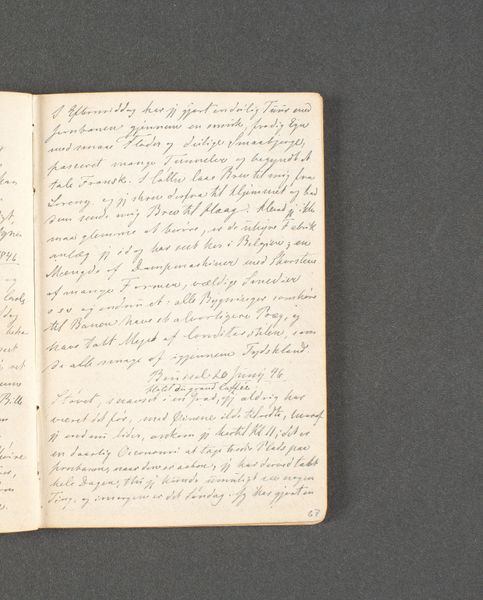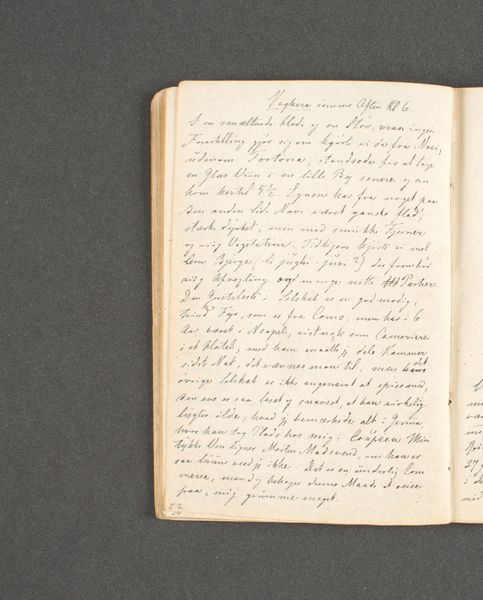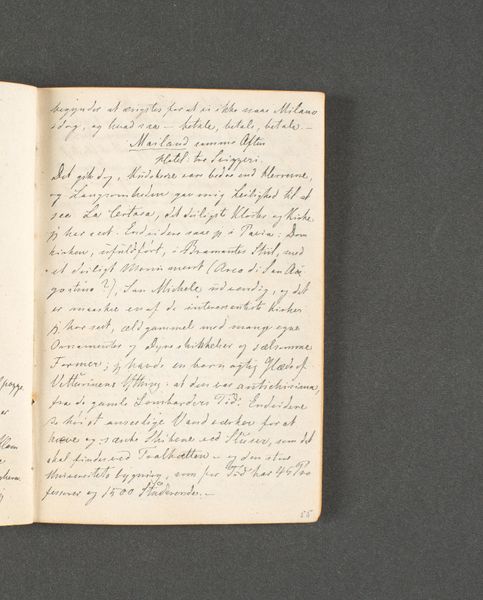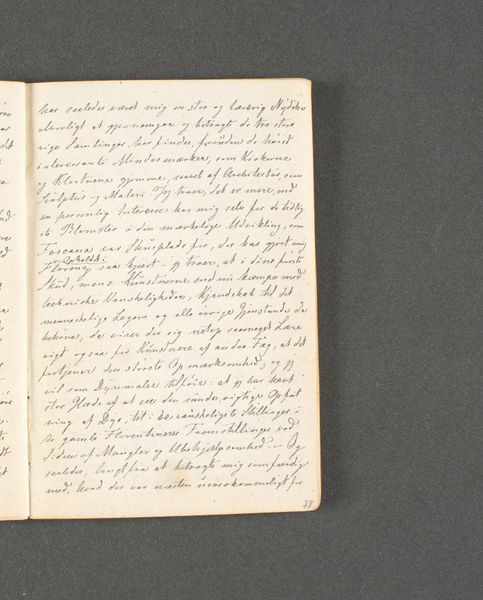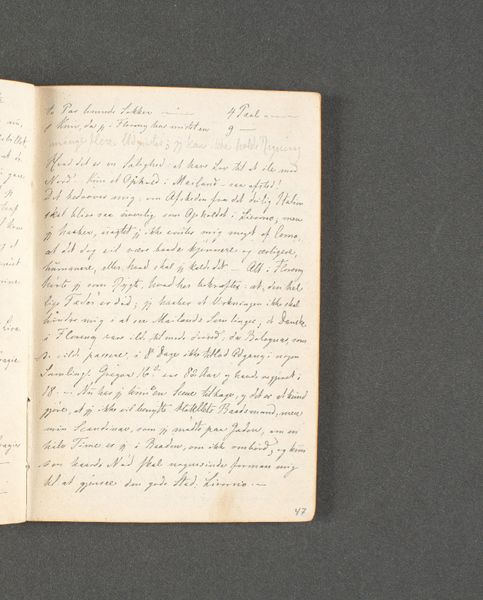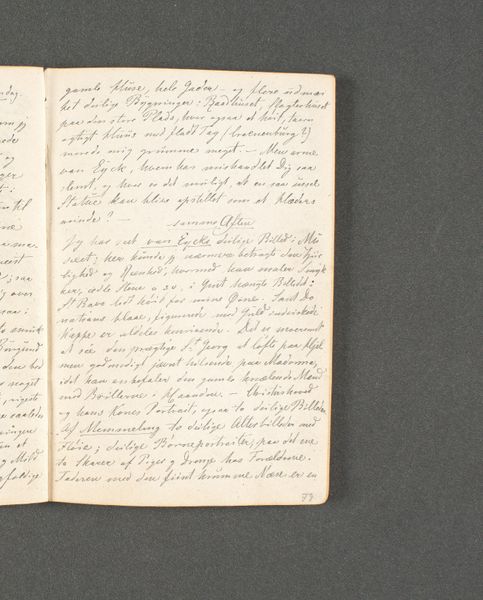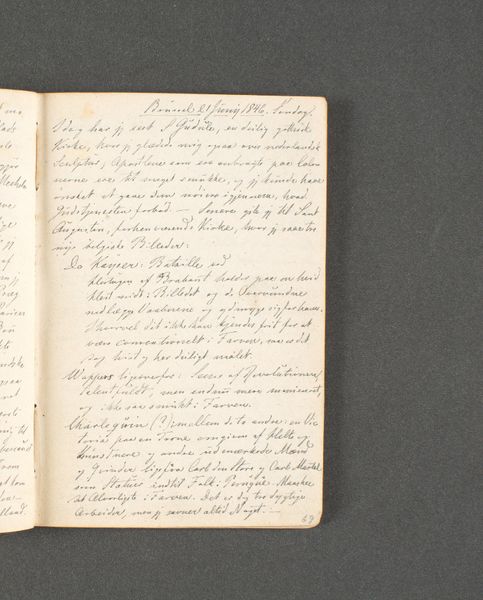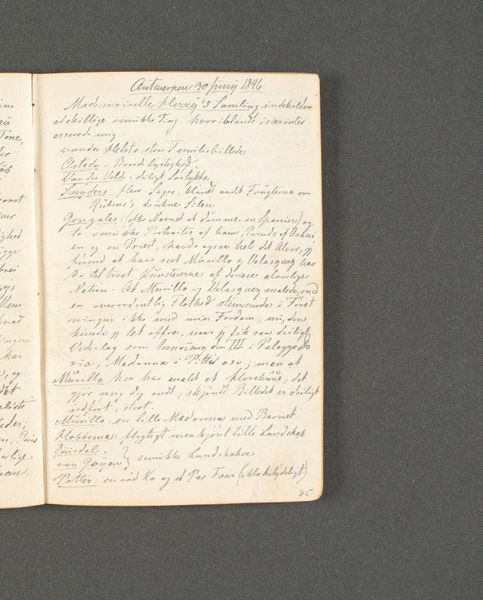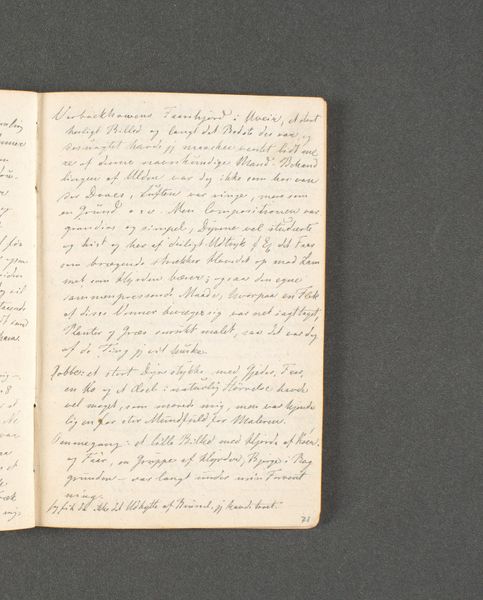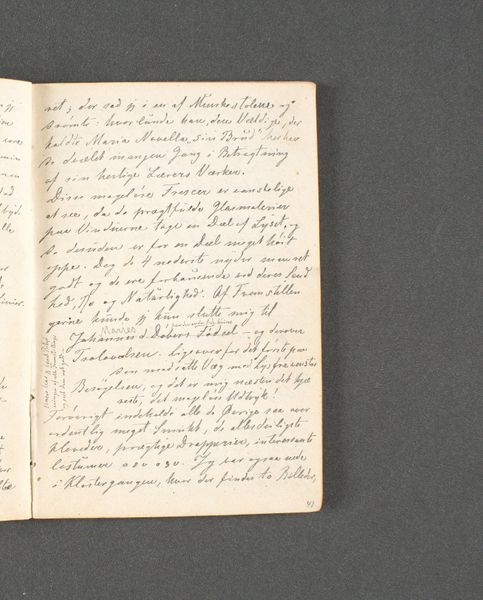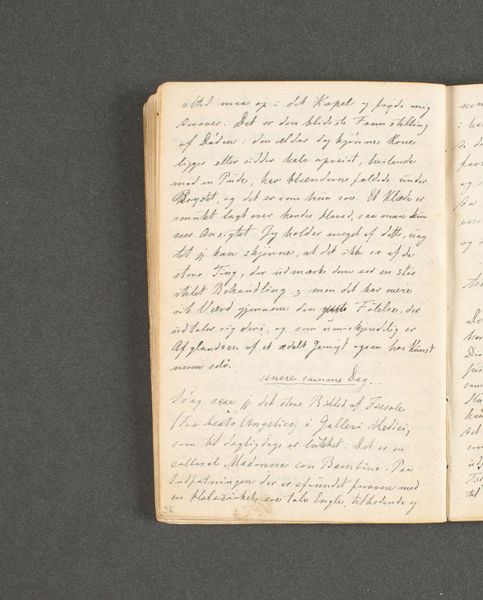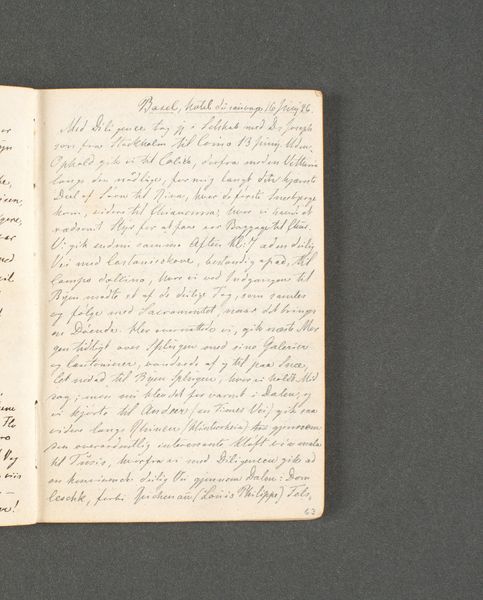
drawing, paper, ink
drawing
narrative-art
landscape
paper
ink
romanticism
Dimensions: 131 mm (height) x 89 mm (width) (bladmaal)
Curator: This drawing is entitled "Rejsedagbog. Freiburg," created in 1846 by Johan Thomas Lundbye. It’s rendered in ink on paper and resides at the SMK, the National Gallery of Denmark. It appears to be a page from a travel journal. Editor: Yes, the page feels immediate and personal. The handwriting suggests a fleeting impression, a sort of stream-of-consciousness capturing the artist’s observations. The sepia tones evoke a bygone era. What narrative can we unpack from this intimate sketch? Curator: Lundbye's romantic sensibilities shine through, framing even this quick jotting as more than just notes; it's narrative art reflecting his cultural immersion in Freiburg, Germany. We have to remember, art during the Danish Golden Age held a critical social role, constructing national identity. Lundbye used landscape to explore his own relation to Danishness, and how that identity shifts as he moves through space. Editor: Absolutely. It's tempting to see just a diary entry, but given the historical context, even personal reflections become politicized. We are given lists of religious architecture as well as local institutions. The experience is carefully written, curated, and documented. What can be gathered from the intersectional dynamics embedded in the record of travel? The act of inscription, what is being omitted and emphasized? Curator: Exactly! The choice of ink and paper itself harkens back to a tradition of meticulous documentation and naturalistic observation tied to colonialism, doesn't it? It asks us to consider, what aspects of society did he think significant enough to record? Editor: In the contemporary perspective, it provides such insights. Examining it beyond a simple landscape reveals considerations of power and representation. These notes give us clues of the artist's values, offering a window into his thought process during that particular journey. Curator: Absolutely. It's a reminder that art, in all its forms, engages within larger power structures, no matter the scale or purpose. Editor: Right. These pages ask, who is granted the privilege to traverse these terrains? In what capacity are they present, as spectators? Or documentarians, framing perceptions for the gaze of the masses.
Comments
No comments
Be the first to comment and join the conversation on the ultimate creative platform.
